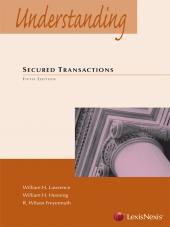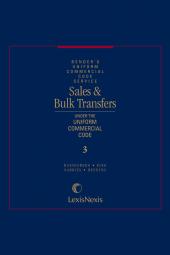Understanding Secured Transactions
Select subscription type
Terms & conditions
Subscribers receive the product(s) listed on the Order Form and any Updates made available during the annual subscription period. Shipping and handling fees are not included in the annual price.
Subscribers are advised of the number of Updates that were made to the particular publication the prior year. The number of Updates may vary due to developments in the law and other publishing issues, but subscribers may use this as a rough estimate of future shipments. Subscribers may call Customer Support at 800-833-9844 for additional information.
Subscribers may cancel this subscription by: calling Customer Support at 800-833-9844; emailing customer.support@lexisnexis.com; or returning the invoice marked "CANCEL".
If subscribers cancel within 30 days after the product is ordered or received and return the product at their expense, then they will receive a full credit of the price for the annual subscription.
If subscribers cancel between 31 and 60 days after the invoice date and return the product at their expense, then they will receive a 5/6th credit of the price for the annual subscription. No credit will be given for cancellations more than 60 days after the invoice date. To receive any credit, subscriber must return all product(s) shipped during the year at their expense within the applicable cancellation period listed above.
Subscribers receive the product(s) listed on the Order Form and any Updates made available during the annual subscription period. Shipping and handling fees are not included in the annual price.
Subscribers are advised of the number of Updates that were made to the particular publication the prior year. The number of Updates may vary due to developments in the law and other publishing issues, but subscribers may use this as a rough estimate of future shipments. Subscribers may call Customer Support at 800-833-9844 for additional information.
Subscribers may cancel this subscription by: calling Customer Support at 800-833-9844; emailing customer.support@lexisnexis.com; or returning the invoice marked 'CANCEL'.
If subscribers cancel within 30 days after the product is ordered or received and return the product at their expense, then they will receive a full credit of the price for the annual subscription.
If subscribers cancel between 31 and 60 days after the invoice date and return the product at their expense, then they will receive a 5/6th credit of the price for the annual subscription. No credit will be given for cancellations more than 60 days after the invoice date. To receive any credit, subscriber must return all product(s) shipped during the year at their expense within the applicable cancellation period listed above.
Product description
View a sample of this title using the ReadNow feature
To purchase a printed version of this title, please visit www.caplaw.com.
This Understanding treatise provides students with an analysis of the underlying rationales of Article 9 of the Uniform Commercial Code, the federal Bankruptcy Code as it relates to Article 9, and other relevant state and federal legislation. Familiarity with these rationales is critical for a true understanding of the law of secured transactions. The organization of this text is largely based upon the traditional five-part approach to the law of secured transactions:
• Scope of the article;
• Attachment of security interests;
• Perfection of security interests;
• Priorities among competing claimants (including extensive treatment of the effects of bankruptcy on security interests); and
• Enforcement of security interests.
In addition, this treatise explains in practical terms the essential elements of different types of secured transactions, giving students a perspective that is crucial to their ability to understand how Article 9 functions in the real world. For example, it describes the structure and use of financing arrangements that are made possible through such techniques as asset-based securitization, mortgage warehouse lending, terminal and field warehousing, financing of accounts, factoring of accounts, and floor planning, as well as other methods of transacting business. The Fifth Edition was necessitated by a significant set of amendments to revised Article 9 promulgated by the sponsors in 2010. The amendments have been enacted in over half the states, with a deferred effective date of July 1, 2013. p> Entries in the Table of Contents include a descriptive word phrase, along with relevant section numbers of the UCC and the Bankruptcy Code. The Table of Contents does not cite all the provisions that might be relevant, but only the most fundamental provisions relating to the particular topic. This approach should aid students using the book as a supplemental text by enabling them to find the relevant discussion based on either the subject or the basic statutory section numbers. The Index and the Table of Statutes and Authorities enable a more detailed search.
Professors and adjunct professors may request complimentary examination copies of LexisNexis law school publications to consider for class adoption or recommendation. Please identify the book(s) you wish to receive, provide your institutional contact information, and submit your request here.
epub is protected by Adobe DRM.
eBooks, CDs, downloadable content, and software purchases are noncancelable, nonrefundable and nonreturnable. Click here for more information about LexisNexis eBooks. The eBook versions of this title may feature links to Lexis+® for further legal research options. A valid subscription to Lexis+® is required to access this content.
 Lexis Nexis
Lexis Nexis 



